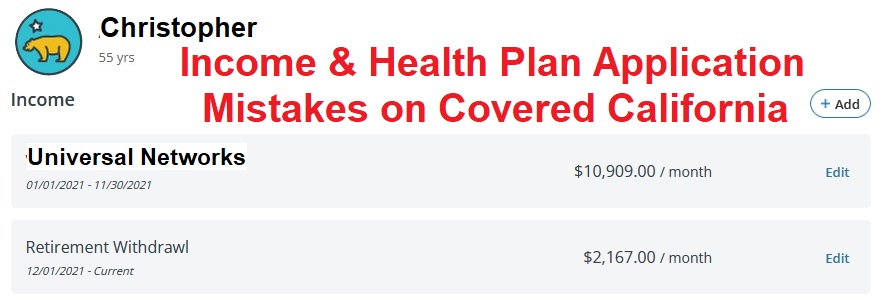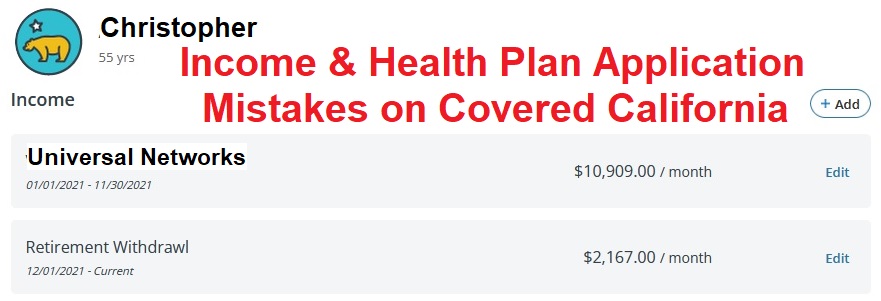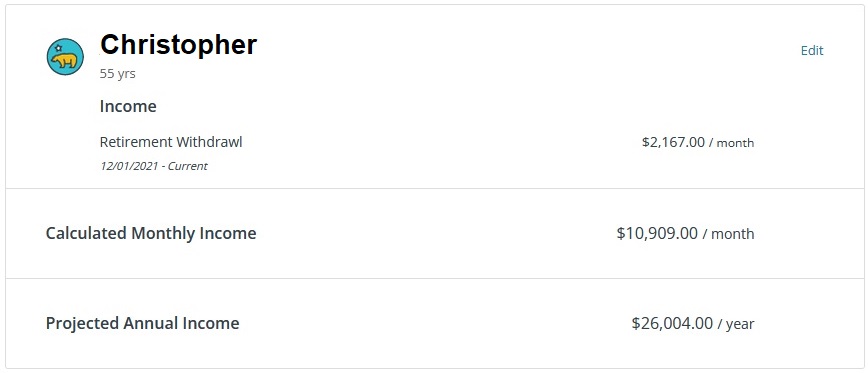Income and Health Insurance Reporting Mistakes for Covered California –

There are two application questions for Covered California that are easily misunderstood and incorrect reporting leads to either no subsidy or Medi-Cal eligibility. The problem is that the Covered California system considers your answers in the month you apply, not prospectively, when you want the health to begin.

Are you enrolled in health insurance?
The Covered California application asks, on an individual household member basis, if they have been offered or enrolled in any government or employer health plan. You may be enrolled in a COBRA plan at the time of your application. However, you are applying for health insurance when your COBRA plan has ended.
If you mark that you have employer health plan, Covered California will not offer you any subsidy to reduce the cost of the health insurance. You have answered question honestly. Unfortunately, the Covered California software does not recognize that your current situation will end in the future, when you want the subsidy to begin. You are ineligible for the Covered California health insurance subsidies if you have been offered or are enrolled in affordable health plan.
Consequently, you need to report your current health insurance offer or enrollment as if it were the first of the month when you want the Covered California health plan to become effective. If on the prospective effective date, your existing health insurance will have ended, then you indicate you have no health insurance.
For example, if you have COBRA through December 31, 2021, and you are applying for Covered California health insurance to begin January 1, 2022, you would mark you have not been offered health insurance. This will allow the application process to extend a monthly subsidy to the household.
When Does My Income Start?
The Covered California application screens for Medi-Cal in the month in which you apply, even if the application is for a future date. When you apply for health insurance through Covered California for 2022, you need to indicate that your income began before your application process.
If you indicate that your income in 2022 will begin on January 1, 2022, and you are applying in December, Covered California will determine you have NO income for December and are therefore eligible for Medi-Cal.
From an accounting perspective, it makes perfect sense to potentially not muddy the income section with income from a prior year. However, the Covered California system does have a little bit of intelligence. The system will not count income from 2021 for the 2022 subsidy calculation if that income has ended. Covered California takes your existing current income and rolls it over into 2022. If some income streams have ended, such as unemployment, that income will not travel into 2022.
For example, if your current income will cease at the end of December, and you are applying for 2022 Covered California, include the current income with the appropriate end date. Assuming the current income is not in the Medi-Cal range, you won’t be determined eligible for Medi-Cal and that income stream will not flip over to 2022. Of course, you will want to indicate your new income stream as beginning in January, 2022, or you will be considered Medi-Cal eligible for the future.
The income section of the Covered California application is the trickiest part of the process. It is very date sensitive and looks at start and end dates of the income streams. Unfortunately, the income displayed by the Covered California can be confusing because of the date issues.

Christopher applies for Covered California health plan to begin January 1, 2022. He applies in November, 2021. He will begin withdrawing retirement benefits in December of $2,167 per month. However, because he is applying in November while he is still receiving income from his current employer, the Covered California application displays his current monthly income.
Because the application is for 2022, Covered California has correctly calculated his annual income at $26,004, based on the $2,167 monthly amount. In addition, Christopher still has employer-based health insurance. Since his current health insurance will end before the Covered California health plan begins, he marks he has not been offered any employer health insurance.
This content was originally published here.




Responses